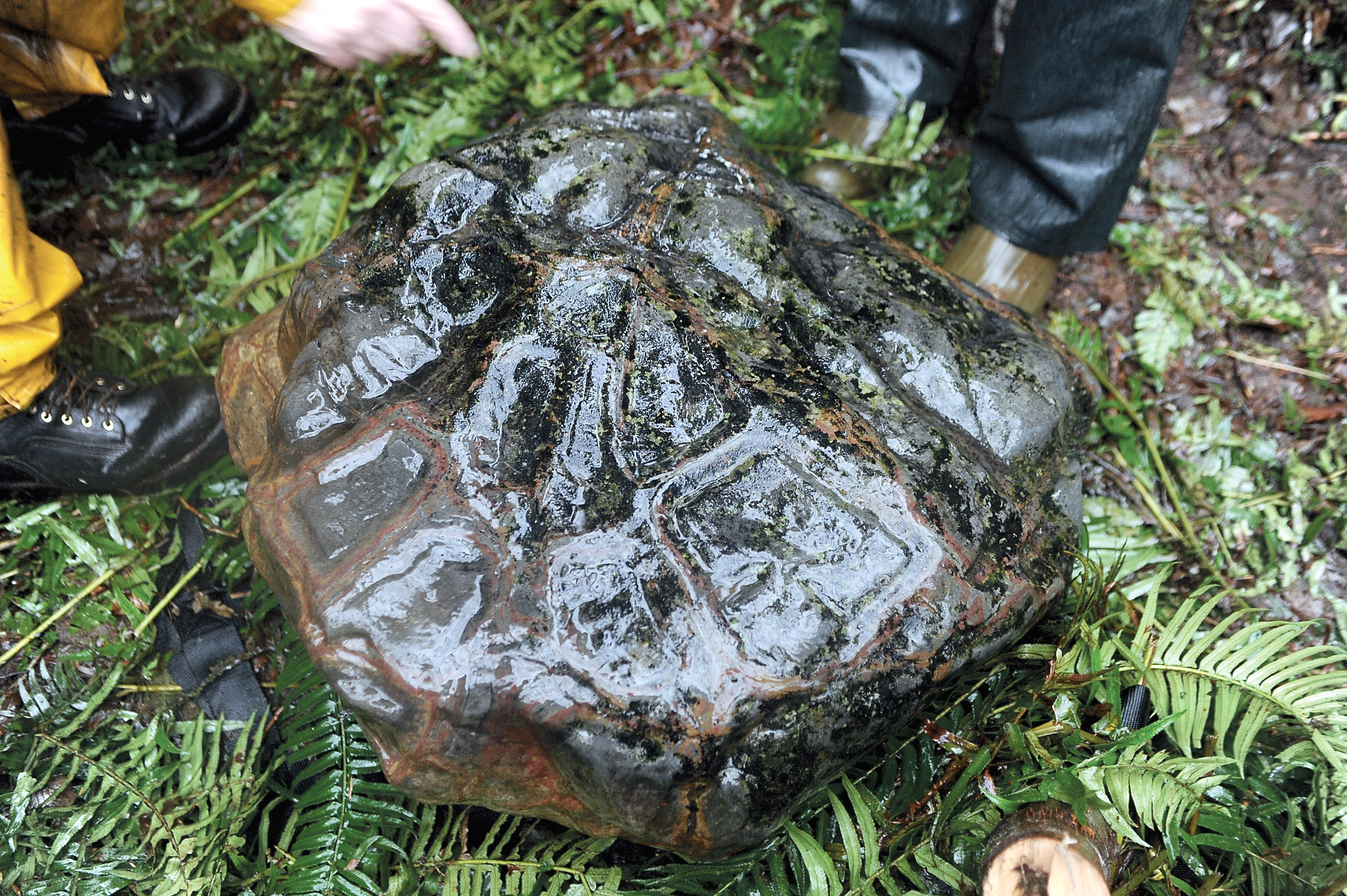FORKS — Quileute tribal members moved a huge rock — bearing a “pre-contact” petroglyph that tells a Quileute legend — from the muddy banks of the Calawah River to the A-Ka-Lat Community Center in LaPush on Wednesday.
The ancient battle between a Quileute cultural hero — the supernatural transformer K’wati — and a menacing Red Lizard was etched centuries ago into the half-ton rock that fisherman Erik Wasankari discovered near Forks last December. The discovery was revealed to the public only this week.
After a short ceremony on the banks of the river, the metamorphic boulder was moved to the tribal center, where a second ceremony was planned in the evening.
The artifact will remain with the tribe.
“This is probably the most important history right here — if not the most important in the modern day,” tribal Chairman Charles Woodruff said of the petroglyph.
The morning ceremony featured a Quileute prayer led by elder Thomas Jackson.
About 30 tribal members, archaeologists, state Department of Natural Resources officials and others gathered at the rock, which had been lifted to a perch above the rain-swollen river.
The petroglyph tells the story of K’wati using his tongue to slay a monster-sized red lizard who built a lair along the shortest path between the Sol Duc and Calawah rivers, tribal officials said.
“The tongue comes out here and strikes the top of the lizard head, which is here,” explained Lee Stilson, an archaeologist who recently retired from DNR.
Stilson identified elaborate symbols that are distinctive of Northwest Coast Native American art.
“This is a phenomenal piece of art,” Stilson said.
“You can tell this has not been done by a metal tool.”
Stilson said the petroglyph was carved “pre-contact,”‘ prior to European contact, probably in the mid-1700s.
“This is one of the most exciting things I’ve ever been associated with,” said Stilson, who retired last week after 44 years in archaeology. “This is my retirement gift.”
A 44-year-old contractor who grew up in the Forks area and now lives in Gig Harbor, Wasankari discovered the moss-covered rock while fishing for winter steelhead with his son, Reid, late last December.
“The fishing was slow, and the river was low,” said Wasankari. “I was just taking a lunch break and saw it there by my feet.”
“It was mostly covered with moss, but there was a little exposed patch with definite carvings,” Wasankari added.
“They were definitely not nature-made.”
His son noticed “triangle shapes” as he helped his father pull back the moss.
Erik Wasankari snapped some photos, left the rock in place and reported the discovery to the Quileute tribe and state officials at the same time.
“I thought it was really old,” he said.
“I figured I’d let the experts figure that one out. I guess they did.”
The stone was discovered near the confluence of the Calawah and Bogachiel rivers just upstream from the Bogachiel Fish Hatchery.
Among the dignitaries at the riverside ceremony was Commissioner of Public Lands Peter Goldmark, who heads the state DNR and works with “all tribes on cultural resources.”
Goldmark said the Quileute petroglyph is significant as a “direct link back to their ancestors.”
Tribal officials decided to move the petroglyph to keep it safe from the elements, theft and vandalism.
There are no other known petroglyphs in the tribe’s traditional territory, Quileute officials said.
Most tribal art from the days before European contact was lost in a fire at LaPush in 1889.
________
Reporter Rob Ollikainen can be reached at 360-452-2345, ext. 5072, or at rollikainen@peninsuladailynews.com.

